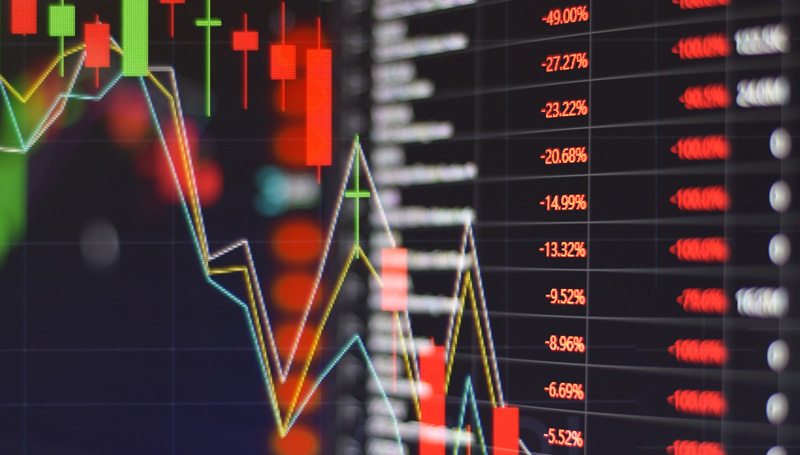

12.05.2022 – Things are getting dicey for Bitcoin now: the largest cryptocurrency has breached the important $30,000 mark. Much of this bearish situation is the fault of its hunchback kin: the culprit is the stablecoin Terra. We explain the background.
This does not look good for the bulls. The long-term support at around $30,000, which has been built since January 2021, has been torn, as you can see from the upper red line in the daily chart. Although in this oversold situation, a countermovement would be called for once. Especially since the recent downward trend has torn two price gaps that want to be closed again – see gap 2 and gap 3. But this can take half an eternity, as you can see from gap 1.

Source: Bernstein Bank GmbH
We recently explained the factors behind this. Above all, the general risk aversion that is spilling over from Wall Street is causing sales. In addition, inflation was somewhat weaker, but higher than feared. In April, consumer prices climbed 8.3 percent compared to the same month last year. In March, the inflation rate had been 8.5 percent. Thus, inflation in the U.S. has moderated for the first time since August 2021. Actually, such high inflation should drive investors into assets that cannot be eroded by the Federal Reserve via an increase in the money supply.
Reserves are being liquidated
On the other hand, it’s only a matter of time before the economy suffers and many people end up unemployed – living off reserves. According to data from digital asset manager Coinshares, investors have pulled about $300 million out of cryptos since mid-March, including $250 million from Bitcoin alone. In addition, as the Fed tightens the interest rate screw, other assets such as government bonds become more attractive, as coupons yield interest.
Terra crashes
But there is another reason for the Bitcoin debacle: The third-largest stablecoin TerraUSD just ran into severe turbulence. Such stablecoins are supposed to fluctuate closely around the dollar equivalent. However, this peg was of no use – on Tuesday, Terra dipped down to 60 cents. Its sibling currency Luna, which floats freely, reported a loss of more than 90 percent in a week.
Singapore-based cover consortium Luna Foundation had initially tried to raise fresh money. Terra creator Do Kwon wanted to raise more than $1 billion in fresh money, according to CNBC. Further, he tried to prop up Terra’s price by selling his bitcoin token reserve worth about $2 billion. However, yesterday Terra collapsed to less than 30 cents. Things have since calmed down a bit here, so as you read these lines, everything may have turned around. The whole thing could also have been a concerted short attack on Terra and thus BTC: according to the financial blog “ZeroHedge”, however, major investors BlackRock and Citadel denied any attack on Terra’s dollar peg.
Analyst sees BTC at 17,000
Our conclusion: the mixed situation is confusing, and what is happening behind the scenes is difficult to grasp. The only fact is that Bitcoin has dipped into a precarious chart region. On a technical basis, analyst Jeffrey Halley of forex broker Oanda expects the bitcoin price to slide as low as $17,000. We are curious to see what happens next and will keep you updated!
Important Notes on This Publication:
The content of this publication is for general information purposes only. In this context, it is neither an individual investment recommendation or advice nor an offer to purchase or sell securities or other financial products. The content in question and all the information contained therein do not in any way replace individual investor- or investment-oriented advice. No reliable forecast or indication for the future is possible with respect to any presentation or information on the present or past performance of the relevant underlying assets. All information and data presented in this publication are based on reliable sources. However, Bernstein Bank does not guarantee that the information and data contained in this publication is up-to-date, correct and complete. Securities traded on the financial markets are subject to price fluctuations. A contract for difference (CFD) is also a financial instrument with leverage effect. Against this backdrop, CFD trading involves a high risk up to the point of total loss and may not be suitable for all investors. Therefore, make sure that you have fully understood all the correlating risks. If necessary, ask for independent advice. CFDs are complex instruments and are associated with the high risk of losing money quickly because of the leverage effect. 68% of retail investor accounts lose money trading CFD with this provider. You should consider whether you understand how CFD work and whether you can afford to take the high risk of losing your money.7
